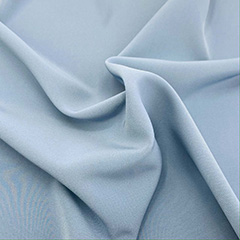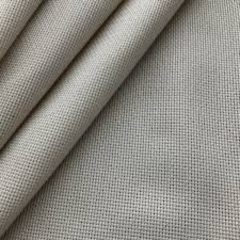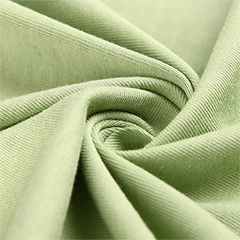Acrylic Fabric Guide
Introduction of Acrylic Fabric
Acrylic fabric is a lightweight, synthetic textile made from polyacrylonitrile fibers, designed to mimic the warmth and softness of wool at a more affordable price.
Known for its colorfastness, durability, and easy care (machine washable, quick-drying), it’s widely used in sweaters, blankets, and outdoor fabrics.
While less breathable than natural fibers, its weather resistance and hypoallergenic properties make it a practical choice for winter wear and budget-friendly textiles.
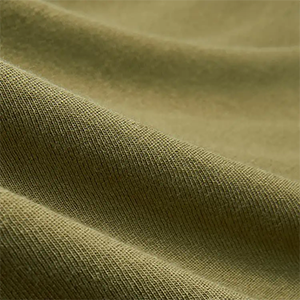
Acrylic Fabric
Types of Acrylic Fabric
1. 100% Acrylic
Made entirely from acrylic fibers, this type is lightweight, warm, and has a soft, wool-like feel. It's commonly used in knitwear like sweaters and scarves.
2. Modacrylic
A modified acrylic fiber that includes other polymers for improved flame resistance and durability. It’s often used in wigs, faux fur, and protective clothing.
3. Blended Acrylic
Acrylic is often blended with fibers like cotton, wool, or polyester to enhance softness, stretch, breathability, or durability. These blends are widely used in everyday clothing and upholstery.
4. High-Bulk Acrylic
This version is processed to create a fluffier, thicker texture, often used in blankets and warm garments.
5. Solution-Dyed Acrylic
The color is added during the fiber production process, making it highly fade-resistant. This type is especially used for outdoor fabrics like awnings and patio furniture.
Why Choose Acrylic Fabric?
Acrylic fabric is lightweight, warm, and soft like wool, but more affordable and easy to care for. It resists wrinkles, shrinking, and fading, holds color well, and dries quickly—making it ideal for clothing, home textiles, and outdoor use.
Acrylic Fabric vs Other Fabrics
| Feature | Acrylic Fabric | Cotton | Wool | Polyester |
|---|---|---|---|---|
| Warmth | High | Medium | High | Medium |
| Softness | High (wool-like) | High | High | Medium |
| Breathability | Medium | High | High | Low |
| Moisture Absorption | Low | High | High | Low |
| Wrinkle Resistance | High | Low | Low | High |
| Easy Care | High | Medium | Low | High |
| Durability | High | Medium | Medium | High |
Guide to the Best Laser Power for Cutting Fabrics
In this video, we can see that different laser cutting fabrics require different laser cutting powers and learn how to choose laser power for your material to achieve clean cuts and avoid scorch marks.
CNC vs Laser | The Efficiency Showdown | Fabric Cutting Machine
Ladies and gentlemen, it's time to embark on an exhilarating journey deep into the epic battle between CNC cutters and fabric laser-cutting machines. In our previous videos, we provided a comprehensive overview of these cutting technologies, weighing their respective strengths and weaknesses.
But today, we're about to take it up a notch and reveal the game-changing strategies that will skyrocket your machine's efficiency, propelling it to outshine even the most formidable CNC cutters in the realm of fabric cutting.
Recommended Acrylic Fabric Laser Cutting Machine
Typical Applications of Laser Cutting of Acrylic Fabric
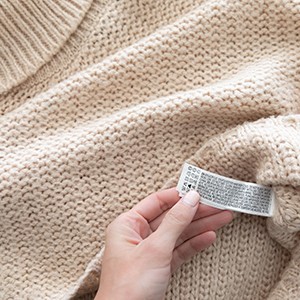
Fashion & Apparel Design
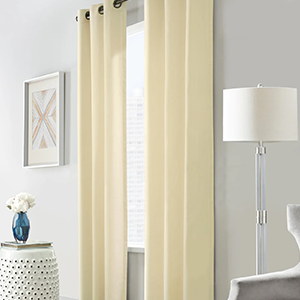
Home Décor & Soft Furnishings
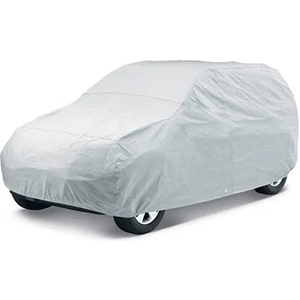
Automotive & Transportation Interiors
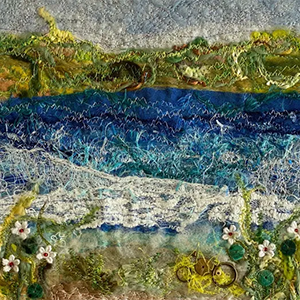
Art & Sculpture
High-end custom clothing (lace, cut-out designs, geometric patterns)
Luxury accessories (laser-cut handbags, shoe uppers, scarves, etc.)
Artistic curtains/room dividers (light-transmitting effects, custom patterns)
Decorative pillows/bedding (precision-cut 3D textures)
Luxury car seat upholstery (laser-perforated breathable designs)
Yacht/private jet interior panels
Ventilation mesh/industrial filters (precise hole sizing)
Medical protective fabrics (cutting antimicrobial materials)
Laser Cut Acrylic Fabric: Process & Advantages
✓ Precision Cutting
Achieves intricate designs (≤0.1 mm accuracy) with sharp, sealed edges—no fraying or burrs.
✓ Speed & Efficiency
Faster than die-cutting or CNC knife methods; no physical tool wear.
✓ Versatility
Cuts, engraves, and perforates in one process—ideal for fashion, signage, and industrial uses.
✓ Clean, Sealed Edges
Heat from the laser melts edges slightly, creating a glossy, durable finish.
① Preparation
Acrylic fabric is laid flat on the laser bed to ensure even cutting.
Masking may be applied to prevent surface scorching.
② Cutting
The laser vaporizes the material along the programmed path, sealing edges for a polished finish.
③ Finishing
Minimal cleanup needed—edges are smooth and non-fraying.
Protective film (if used) is removed.
FAQS
Acrylic fabric is a synthetic material with distinct pros and cons: As an affordable wool alternative, it offers cost-effectiveness, lightweight warmth, wrinkle resistance, and colorfastness, making it suitable for budget-friendly winter clothing and blankets. However, its poor breathability, tendency to pill, plastic-like texture, and non-biodegradable environmental impact limit its applications. It's recommended for frequently machine-washed everyday items rather than high-end or sustainable fashion.
Acrylic fabric is generally not ideal for summer wear due to its poor breathability and heat retention properties, which can trap sweat and cause discomfort in hot weather. While lightweight, its synthetic fibers lack moisture-wicking abilities, making it better suited for cool-weather garments like sweaters rather than summer clothing. For warmer months, natural fibers like cotton or linen are more comfortable alternatives.
- Poor Breathability (Synthetic fiber structure inhibits sweat evaporation, causing discomfort in warm weather)
- Pilling Prone (Surface fuzz balls form easily after repeated washing, affecting appearance)
- Plastic-like Texture (Low-cost variants feel stiff and less skin-friendly than natural fibers)
- Static Cling (Attracts dust and generates sparks in dry environments)
- Environmental Concerns (Petroleum-based and non-biodegradable, contributing to microplastic pollution)
100% acrylic fabric refers to a textile made exclusively from synthetic acrylic fibers without blending with other materials. Key characteristics include:
- Full synthetic composition - Derived from petroleum-based polymers (polyacrylonitrile)
- Uniform properties - Consistent performance without natural fiber variability
- Inherent traits - All the advantages (easy care, colorfastness) and disadvantages (poor breathability, static) of pure acrylic
Acrylic and cotton serve different purposes, each with distinct advantages:
- Acrylic excels in affordability, color retention, and easy care (machine washable, wrinkle-resistant), making it ideal for budget-friendly winter wear and vibrant, low-maintenance textiles. However, it lacks breathability and can feel synthetic.
- Cotton is superior in breathability, softness, and comfort, perfect for everyday wear, warm climates, and sensitive skin, though it wrinkles easily and may shrink.
Choose acrylic for cost-effective durability; opt for cotton for natural comfort and versatility.
Acrylic fabric is generally safe to wear but has potential health and environmental concerns:
- Skin Safety: Non-toxic and hypoallergenic (unlike wool), but low-quality acrylic may feel scratchy or trap sweat, causing irritation for sensitive skin.
- Chemical Risk: Some acrylics may contain trace formaldehyde (from dyes/finishes), though compliant brands meet safety standards.
- Microplastic Shedding: Washing releases microfibers into water systems (a growing environmental health issue).





